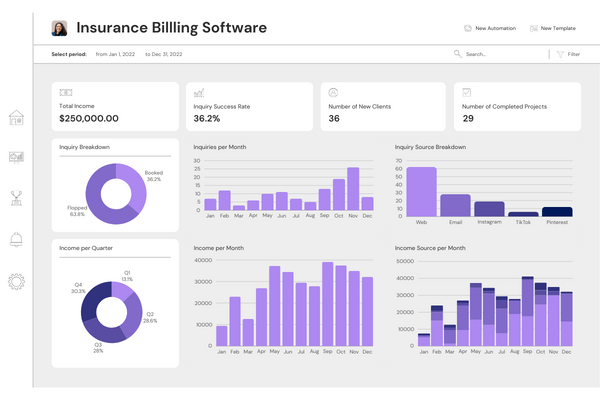Introduction to Chiropractic Insurance Billing Software
Chiropractic insurance billing software plays a very important role in the chiropractic service bureau’s bills. In an ever-changing health environment, chiropractors are charged with handling insurance claims efficiently and providing quality care to patients as well. On the other hand, this kind of software helps by eliminating paper-based entries, simplifying the claim submission process, and ensuring that all policies are adhered to. Another good thing about this software is that it has been designed with simple user interfaces and customizable features to make it easier for chiropractors to follow through on their respective modes of reimbursement from insurers. By using such medical billing systems, it would be possible for clinics to improve their processes, decrease the administrative burden, and increase income generation hence promoting excellent chiropractic practices.
Benefits of Using Chiropractic Insurance Billing Software
In search of making its billing system efficient, chiropractic insurance billing software comes with lots of advantages to chiropractic practices that need streamlining their billing processes. Firstly, this would help to save time and also reduce the administrative workload by automating repetitive billing actions such as claim generation, submission, and follow-up. Through this automation, the errors that come with human beings doing these things will be minimized leading to fewer claim denials and quick reimbursement. Moreover, Chiropractic insurance billing software gives insights into the financial affairs of any practice which can enable a chiropractor to see trends, maximize revenue cycles, and make informed business choices. Again using this type of software ensures one complies with insurance regulations hence reducing risks such as penalties and audits from authorities. Consequently, they achieve results like increased efficiency, more accurate data entry systems, larger income flows, and freedom for patients as well as staff.
Key Features to Look for in Chiropractic Insurance Billing Software
When choosing chiropractic insurance billing software, one must look at its key features that can support your practice effectively. Some of these may entail electronic claims submission capability, live eligibility verification, automated patient billing and invoicing, customizable reporting and analytics, integration with electronic health record (EHR) systems, and adherence to HIPAA rules. Besides, you should go for software offering excellent customer support and training to ensure a smooth implementation and ongoing use. By valuing these main issues in place, chiropractic practices can select software that suits their current needs and grows with them.
Top Chiropractic Insurance Billing Software Options
There are several top billing software for chiropractic insurance available in the market that have unique features and benefits. Some popular options are ChiroTouch, ClinicDr, Jane, Kareo, and CollaborateMD. These platforms provide comprehensive solutions to chiropractic practices with a variety of billing, scheduling, EHR, and practice management tools meant to streamline operations and increase efficiency. Ease of use, cost, customer support system, as well as integration capabilities, are some of the considerations one should make when selecting software from packages. To improve patient care delivery they must select the right chiropractic insurance billing software for their practice which means enhancing billing accuracy as well as streamlining administrative processes.
Tips for Choosing the Right Chiropractic Insurance Billing Software
When choosing the right chiropractic insurance billing software for your practice, it is important to reflect on what you need, how much you can spend, and what you want to achieve. Firstly, identify those central and most vital features that have the greatest effect on your practice’s receivables system. Then look into the best software on offer that matches up with these requirements. Additionally, take advantage of free trials or demos available from vendors to make sure that they fit all your needs before making a full-time commitment.
Best Practices for Implementing Chiropractic Insurance Billing Software
Implementing chiropractic insurance billing software would be successful if great care is taken in planning and execution. To start with, create a comprehensive implementation plan containing key milestones, timelines, and roles assigned to all players involved in this process. You should also fully train them about the usage and advantages of this technology as well as provide technical support whenever necessary. Furthermore, monitoring and evaluating its performance will help in discovering areas where there are improvements needed so that it aligns with changes in your practice needs over time.
